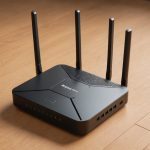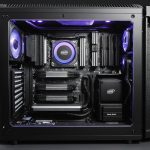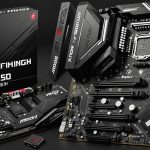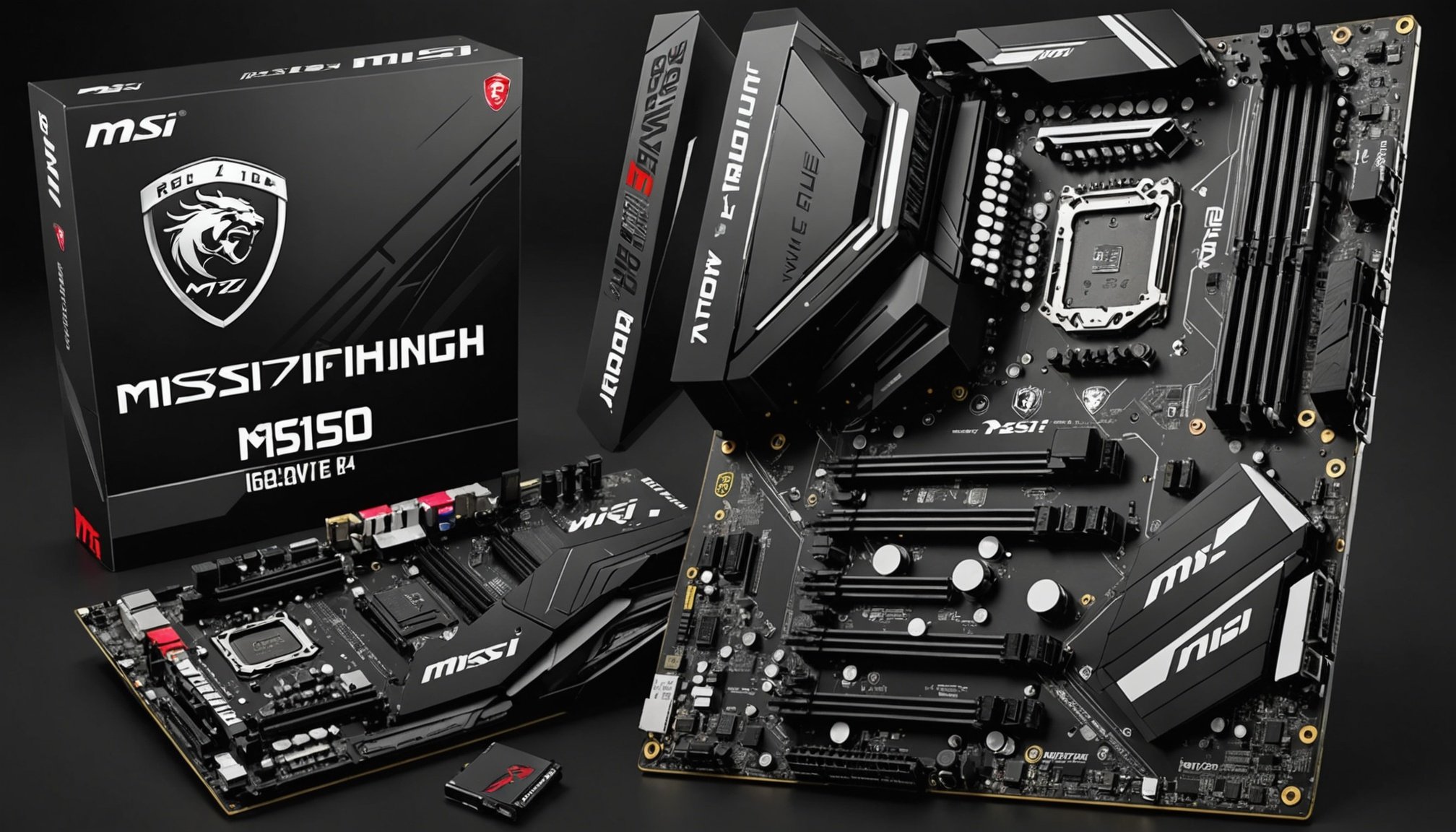Unlocking Peak Performance: Essential BIOS Adjustments for Your MSI MEG Z490 Unify Motherboard
When it comes to maximizing the performance of your MSI MEG Z490 Unify motherboard, understanding and tweaking the BIOS settings is crucial. The BIOS, or Basic Input/Output System, is the gateway to unlocking your system’s full potential, whether you’re a gamer, a content creator, or an enthusiast looking to push the limits of your hardware.
Understanding the MSI MEG Z490 Unify BIOS Interface
The BIOS interface of the MSI MEG Z490 Unify is a powerful tool that allows you to fine-tune various aspects of your system. Here, you’ll find sections dedicated to system configuration, overclocking, and hardware compatibility. Familiarizing yourself with these areas is essential for making efficient adjustments.
Also read : Ultimate Guide to Configuring VoIP: Seamlessly Connect Cisco SPA112 with Synology NAS
Navigating the BIOS
When you enter the BIOS, you’ll encounter a user-friendly interface with graphical enhancements and intuitive controls. This design helps both novices and experienced users to configure settings easily. Here are some key sections you’ll need to understand:
- System Configuration: This section allows you to adjust basic settings such as time, date, and boot order.
- Overclocking: Here, you can tweak settings related to CPU, memory, and power to enhance performance.
- Hardware Compatibility: This section helps you configure settings for your specific hardware components, ensuring they work seamlessly together.
Firmware Updates
Regular firmware updates are vital for improving system stability and adding new features. These updates ensure your motherboard operates smoothly with the latest advancements and security patches. For example, MSI frequently releases BIOS updates that resolve known issues and enhance compatibility with newer components, providing a seamless experience.
Also to discover : Complete Guide to Effortless Liquid Cooling Installation in Cooler Master MasterBox NR600 for Peak Intel Core i9 Performance
"Regular updating of firmware can resolve known issues and enhance the compatibility of newer components, providing a seamless experience."[1]
Essential BIOS Tweaks for Performance Optimization
Optimizing your BIOS settings can significantly enhance your system’s performance. Here are some essential tweaks to consider:
Overclocking the Processor
Overclocking is a key aspect of performance optimization. Here’s how you can do it:
- CPU Multiplier: Adjusting the CPU multiplier is a straightforward way to boost processor speed. However, careful tuning of the base clock is necessary to avoid destabilizing the system.
- Stress Testing: After overclocking, it’s crucial to perform stress testing to ensure stability and prevent potential system failures under load.
"Careful tuning of the base clock can squeeze extra performance but might destabilize the system if not approached correctly."[1]
Memory Overclocking
Memory overclocking is another vital aspect:
- XMP Profile: Activating an XMP (Extreme Memory Profile) profile optimizes RAM performance effortlessly.
- Manual Timing Adjustments: For advanced tuning, manual timing adjustments can offer increased stability. Understanding the impact of memory frequency is essential, as higher frequencies can significantly uplift system speed but require thorough testing to prevent instability.
| Memory Setting | Description | Impact |
|---|---|---|
| XMP Profile | Pre-defined profile for optimal RAM performance | Easy optimization, stable performance |
| Manual Timing | Custom adjustments for RAM timings | Increased stability, requires expertise |
| Memory Frequency | Adjusting the speed of RAM | Higher frequencies can increase system speed, but may require testing |
Enhancing Power Settings
Tweaking power settings further aids in maintaining consistent performance:
- CPU Power Limits: Adjusting CPU power limits ensures the system remains efficient under heavy workloads.
- Load Line Calibration: Employing load line calibration stabilizes voltage, which is crucial for overclocked systems.
- Fan Curves: Setting up appropriate fan curves is vital for effective thermal management, ensuring the system remains cool and operationally reliable.
"Adjusting CPU power limits ensures the system remains efficient under heavy workloads. Employing load line calibration stabilizes voltage, crucial for overclocked systems."[1]
Troubleshooting Potential Issues
Navigating the BIOS can sometimes lead to challenges, especially for those new to BIOS settings. Here’s how to troubleshoot common issues:
Identifying Performance Problems
- Isolate Recent Changes: If you encounter unexpected system behavior after tweaking, start by isolating the recent changes. This often pinpoints the issue.
- Reverting BIOS Settings: If problems persist, you can manually reset individual configurations or use the BIOS reset option to restore default factory settings.
Effective Use of the BIOS Reset Option
The BIOS reset option is a crucial tool in maintaining system stability:
- Accessing the Reset Function: This can be done through the BIOS menu or a designated motherboard jumper.
- Documenting Original Settings: Before experimenting, document your original settings to facilitate easier restoration if needed.
"Understanding its usefulness is essential. When encountering system errors after critical tweaks, accessing this option quickly restores functionality."[1]
Visual Aids and Step-by-Step Guides
Using visual aids and step-by-step guides can make navigating the BIOS configuration much easier:
Screenshots of Key BIOS Settings
- Annotated Visuals: Screenshots of both stock and tweaked settings serve as practical references, offering a comparison that helps users understand the impact of each adjustment.
- Visual Roadmap: These visuals provide a visual roadmap to successful configuration, particularly enlightening for novices.
Step-by-Step Process for Each Major Tweak
- Detailed Instructions: Step-by-step guides detail the modification process from initiation to completion, ensuring clarity. These instructions are invaluable for BIOS configuration, guiding users through critical tweaks while providing insights into maintaining system integrity.
- Tips for Less Experienced Users: Including tips for less experienced users fosters confidence in navigating the BIOS safely and effectively.
Resources for Further Learning
To deepen your understanding, here are some resources to consider:
- Forums and Articles: Platforms like MSI forums and technical articles offer community support and expert advice, facilitating continuous learning and problem-solving.
- Official Guides: MSI provides official guides and tutorials that can help you enhance your BIOS proficiency and keep your knowledge up-to-date with technological advancements.
"By engaging with these resources, users can enhance their BIOS proficiency and ensure their guides remain up-to-date with technological advancements."[1]
Practical Insights and Actionable Advice
Here are some practical insights and actionable advice to help you get the most out of your MSI MEG Z490 Unify motherboard:
Start with Small Adjustments
When tweaking BIOS settings, it’s best to start with small adjustments and gradually increase them. This approach helps in identifying the optimal settings without causing instability.
Use Advanced Mode Wisely
The Advanced Mode in the BIOS offers more detailed settings but requires a good understanding of what each setting does. Use this mode wisely, and always refer to the user manual or online resources if you’re unsure.
Monitor Your System
Use tools like the Hardware Monitor in the BIOS to keep an eye on your system’s temperatures, voltages, and other critical metrics. This helps in ensuring that your system remains within safe operating parameters.
Save Your Profiles
Saving your BIOS profiles can be a lifesaver if you need to revert to previous settings. This feature, often found in the Favorites section, allows you to save multiple profiles for different use cases.
Unlocking the peak performance of your MSI MEG Z490 Unify motherboard involves a deep understanding of the BIOS interface and the ability to make strategic tweaks. By following the guidelines outlined above, you can optimize your system for gaming, content creation, or any other demanding task.
Remember, the key to successful BIOS tweaking is patience and thorough testing. Always document your changes, use visual aids, and refer to step-by-step guides to ensure you’re making the most out of your high-end hardware.
"By mastering these troubleshooting techniques, users can confidently explore performance enhancements with their MSI MEG Z490."[1]
With the right approach and resources, you can transform your MSI MEG Z490 Unify into a powerhouse that meets and exceeds your performance expectations. Happy tweaking











